
The Amazon Rainforest is located in South America and is the world’s largest tropical rainforest covering an area of 5,500,000 km2. Due to its large size, the Amazon rainforest covers a territory of nine nations with the biggest part of it in Peru and Brazil. The climate within the region is mainly tropical with hot, humid, and very wet conditions.
The Amazon Rainforest is one of the most fascinating places on Earth. Home to a large variety of plants, animals, and trees. As mysterious as it is breathtaking, the Amazon remains one of the most written about and studied ecosystems on earth. Here are a few facts you probably didn’t know about the great Amazon rainforest.
The Amazon rainforest also provides a home to many plants and animals and for this reason, it qualifies as a major tourist destination for the lovers of nature. The Amazon Rainforest holds many hidden wonders of nature. With an abundance of flora and fauna as well as indigenous culture, it’s safe to say that the Amazon has one of the richest ecosystems in the world.
The Amazon Rainforest is the world’s largest tropical rainforest, the Amazon Basin covers some 40% of the South American continent, the Amazon Rainforest spans across 9 countries (Brazil, Peru, Colombia, Venezuela, Ecuador, Bolivia, Guyana, Suriname, and French Guiana. Brazil takes the largest share of the rainforest, about 60%, while roughly 13% of it is in Peru and 10% of it is in Colombia. The Amazon Biome is virtually unrivalled in scale, complexity and opportunity, and truly is a region distinguished by superlatives.
Not only does the Amazon encompass the single largest remaining tropical rainforest in the world, it also houses at least 10% of the world’s known biodiversity, including endemic and endangered flora and fauna, and its river accounts for 15-16% of the world’s total river discharge into the oceans. The Amazon River flows for more than 6,600 km, and with its hundreds of tributaries and streams contains the largest number of freshwater fish species in the world.

Amazon rainforest has an interesting story behind its name. In March of 1500, Vicente Yáñez Pinzón of Spain became the first documented European to sail up the Amazon River. But fellow Spanish explorer Francisco de Orellana was the first European to travel the entire length of the Amazon River, making the epic journey in 1541-42. He was a Spanish explorer who set out on an exploration to find El Dorado, the legendary city of riches. Orellana, fought a war with native warriors of Icamiabas. He was amazed that the women of the tribe fought alongside men. So, he named the jungle as Amazon, which is the name of a female warrior tribe mentioned in Greek mythology.
Certainly, the Amazon is the largest botanical garden on planet earth, in its vast forests the greatest amount of wildlife arises, which provide us with food and are extremely important for science. The Amazon is home to several exotic species of birds. There are over 1500 species of birds in this green paradise such as beautiful blue-colored parrot, spectacled owl, scarlet macaw, and Amazon kingfishers. In the rivers of the Amazon there is an incalculable variety of fish such as the largest freshwater fish, we are referring to the Paiche, until now an approximate number of 3,000 species, and many species of reptiles and batrachians.
The fertile rainforest is home of 430 different mammal species aprox, including several species of big cats (pumas, jaguars, ocelots, etc.), the rare Amazon River dolphin, giant river otters and armadillos, and weird animals such as the Baird’s tapir and capybara (the world’s largest rodent), 150 different species of monkeys (tamarin monkey, howler monkey, woolly monkey, spider monkey, capuchin monkey, squirrel monkeys, and titi monkey). An amazing 2.5 million different insect species, such as jewel caterpillar, leaf cutter ant, assassin bug, and even a lantern fly.
There are over 40,000 different plant species found in the Amazon rainforest basin, including hundreds of types of ferns and thousands of different species of flowering plants. Very little sunlight reaches the floor of the forest due to the dense canopy. So, the Amazon is a haven for shade-tolerant plants, especially orchids, bromeliads and other epiphytes that grow on trees and have aerial roots.
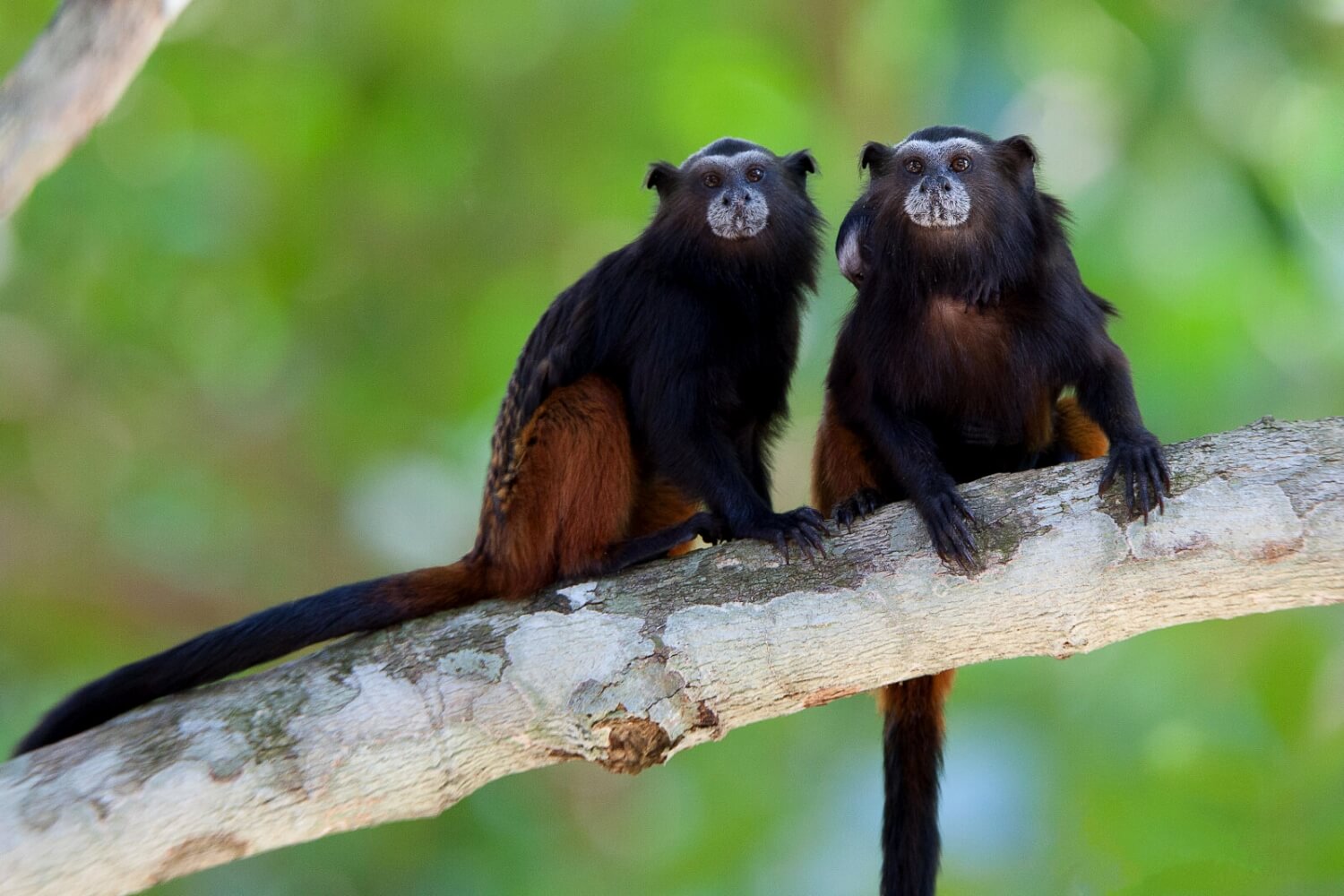
The Amazon River runs through the thick forest cover and fulfills the water needs of its inmates. This is the second largest river in the world, standing next to the Nile River. However, according to a group of scientist, who carried out a complex study using plenty of whiz-bang technology, the Amazon River actually begins in the Peruvian Andes and extends for 4,225 miles (6,800 kilometers), some 65 miles (105 km) longer than the Nile. Either way, there is no doubt it’s the biggest river by volume, pumping out a staggering 55 million gallons of water into the Atlantic per second.
The Amazon contains about 20% of the world’s total volume of river water. There are approximately 15,000 tributaries flowing into the river, including sources originating in Bolivia, Brazil, Colombia, Ecuador, French Guyana, Guyana, Peru, Suriname and Venezuela. The most distant source is Nevado Mismi, an 18,358-foot volcanic mountain located in the Peruvian Andes near Arequipa. Melting snow from there feeds into the Ucayali-Apurímac river system, the Amazon’s primary source.
Millions of years ago, the Amazon River once flowed from east to west, emptying into the Pacific Ocean. When the Andean Mountains began to rise (due to great pressure on the tectonic plates) along the eastern side of the South American continent about 20 million years ago, this emerging mass blocked the flow of the Amazon River, creating the actually river system of the amazon basin.
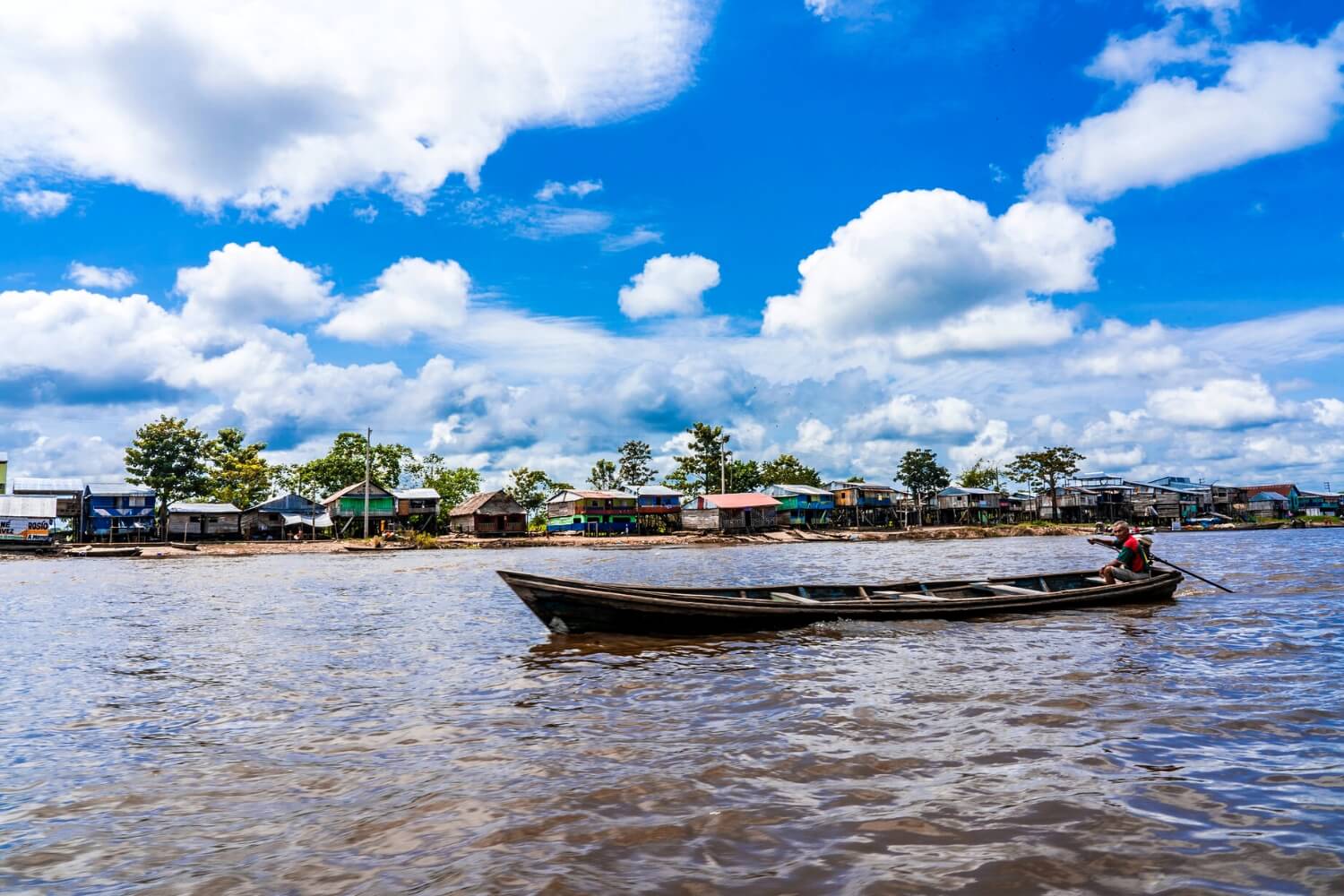
In addition to being home to thousands of different tree and animal species, the Amazon Rainforest is also inhabited by 400-500 indigenous tribes, which is more than anywhere else on earth, and around 300 indigenous languages are spoken throughout the Amazon. Each tribe has its separate language and culture. Living in villages along the banks of the river, this communities are often focused on farming, fishing, hunting, extraction of forest products, and waged labor are also common ways of making a living. Most villages are home to exceptional craftsmen, and sometimes you even meet families selling goods from canoes along the river.
Most indigenous people of the Amazon will go to a traditional shaman for healing before seeking help from Western medicine. Shamanism is an ancient practice that combines spirituality and natural science, and its traditions have been passed down from generation to generation for centuries. The Shamanic tradition is currently in grave danger of dying out, as it is hard to find students willing to undergo the strict regimen required to study shamanic healing practices.
The more than 50 indigenous communities in the Amazon have also never made contact with anyone outside the rainforest. Brazil’s Amazon is said to host the majority of the indigenous tribes. Most of the tribes are not settled in a specific location but rather move from one location to another often. They are nomadic hunters and gatherers.
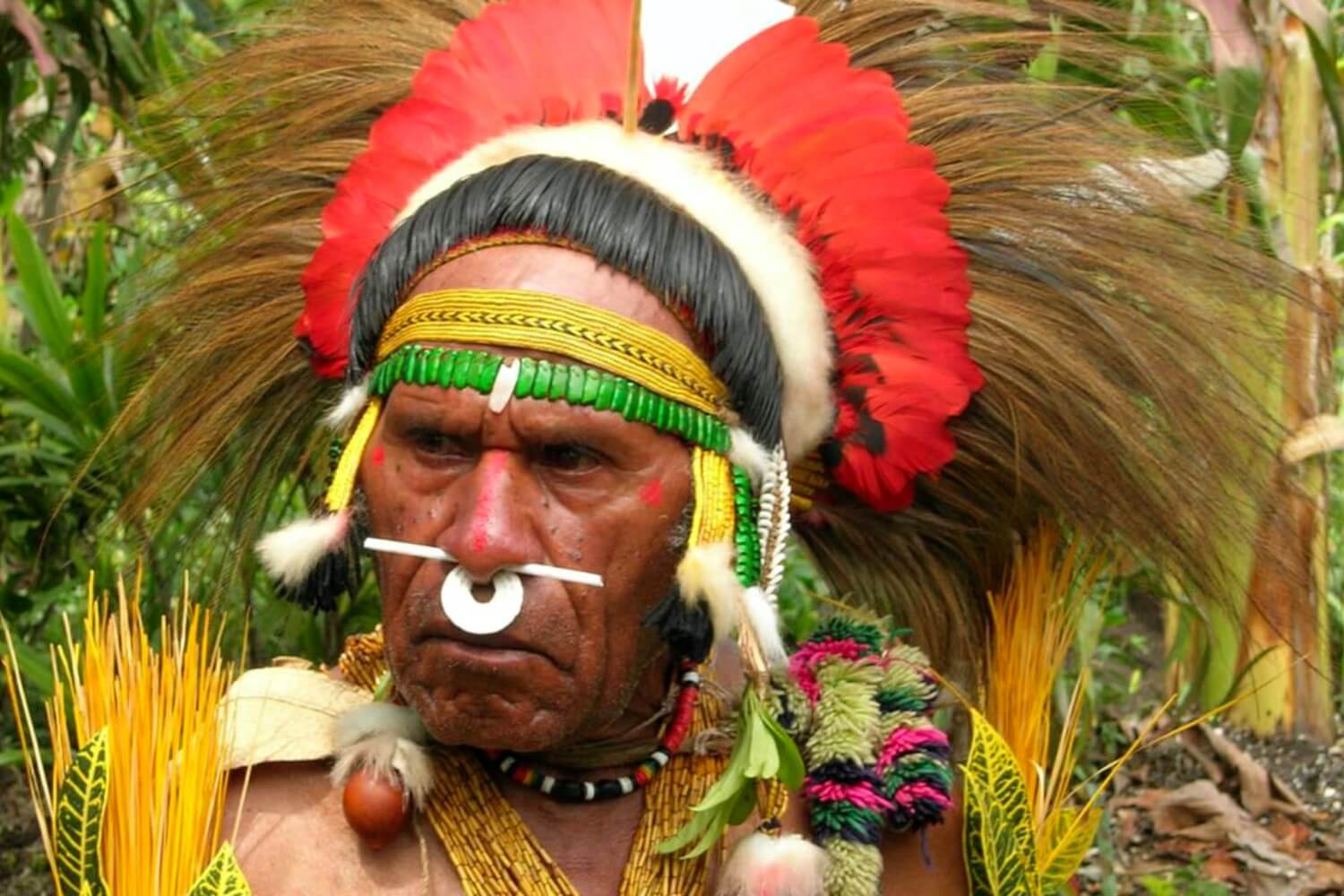
This is absolutely vital in fighting the climate crisis and limiting the rise of global temperatures. The Amazon Rainforest is responsible for producing than 20% of the world’s oxygen, which is why it is many times referred to as “Lungs of the Earth”. The vegetation in the Amazon continuously draws in and recycles carbon dioxide into oxygen and releasing it into the atmosphere, acting as a giant air machine.
Through the process of photosynthesis, trees take in carbon dioxide and produce the oxygen we breathe. Trees shade us from the heat, protect us from the rain and wind, conserve water, preserve soil, clean the air of pollutants. Each tree is its own majestic ecosystem that is filled with activity and energy pollinators and seed dispersers, predators and the preyed upon biodiversity a giant intertwined web that brings more trees to the area to slowly become lush, moist, resilient, forests teeming with abundance. Trees in the forest rely on each and have evolved to live in cooperative, interdependent, relationships that protect each other from heat, winds, storms, and predators.
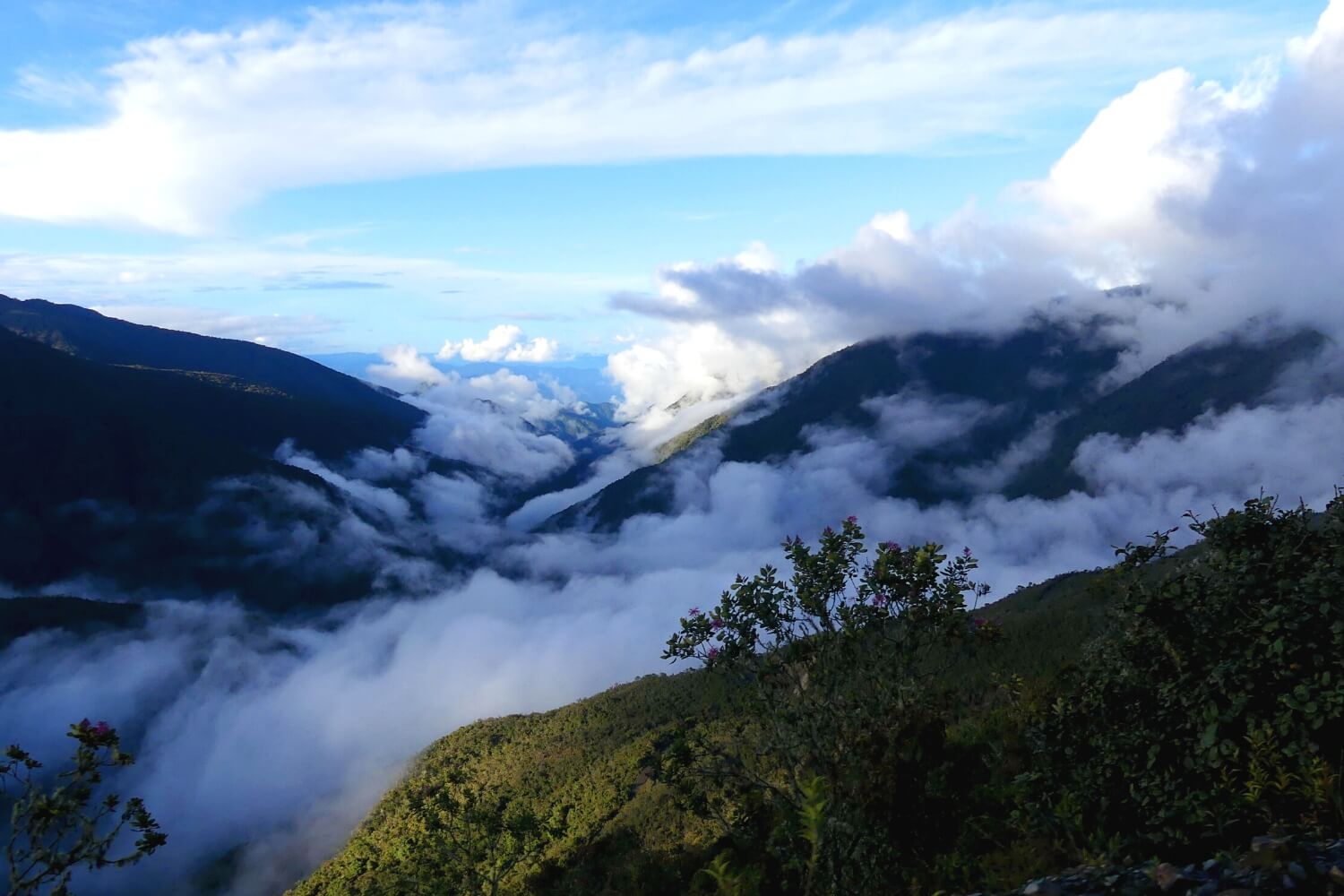
Amazon jungles are depleting at an alarming rate. This is why it is extremely important that we take action in order to preserve this amazing forest and all that it has to offer. Probably even faster than you think. A depressing 1.5 acres of the Amazon vanishes every single second and with it an average of 137 species become extinct each day. Actions to address the deforestation problem have been difficult over the years until recently when laws and stricter policies were put in place to protect the forest from deforestation. Conservation policies, improved law enforcement, and new protected areas have played a significant role.
With over 50 million cattle roaming the lands, cattle ranching accounts for about 80% of deforestation. Brazil alone exported 6 billion dollars worth of beef in 2018, more than any other country in history, making the Amazon Rainforest disappear at an alarming rate. Aside from issues of deforestation, the Amazon Rainforest faces threats in unsustainable and illegal extraction of natural resources, extensive agricultural, as well as climate change.

Dense forests of Amazon pose several threats to travelers and explorers. Deadly animals are major hazards to those who tread the untrodden paths. There are some seemingly innocent creatures that can cause us great harm. Bullet ants and Brazilian spiders are some among them. Green anacondas, flesh-eating piranhas and poison dart frogs are capable of sending a chill up your spines.
The Amazon is home to some 1,500 species of amphibians, the majority of which are frogs, toads, and tree frogs. In some areas, you can find up to 80 species of frogs in a small section of the rainforest. The most vivid of these species are the poison dart frogs, which are typically seen on the rainforest floor and active during daylight hours. Ranging in colors from bright red and orange to dazzling blues and greens, these frogs are notoriously toxic. Some indigenous Amazon hunters coated the tips of their darts in the poison from the frog’s skin in order to kill their prey.

If you imagined the Amazon floor as a bright place, you’re very, very wrong. A rainforest sounds like a vibrant place full of light and color. And in some places, it is. But in other parts of the Amazon, due to the trees’ thick canopies (top branches and tree leaves), throughout large parts of the Amazon, the forest floor is almost completely black as only 1% of sunlight can make it through the thick canopy.
Up to 80% of wildlife in the rainforest make this canopy their home. In fact, when it rains it takes around 10 minutes for water to seep down to the shrubbery below. From the rainforest’s 40,000 plant species, most of the plants are shade-tolerant.
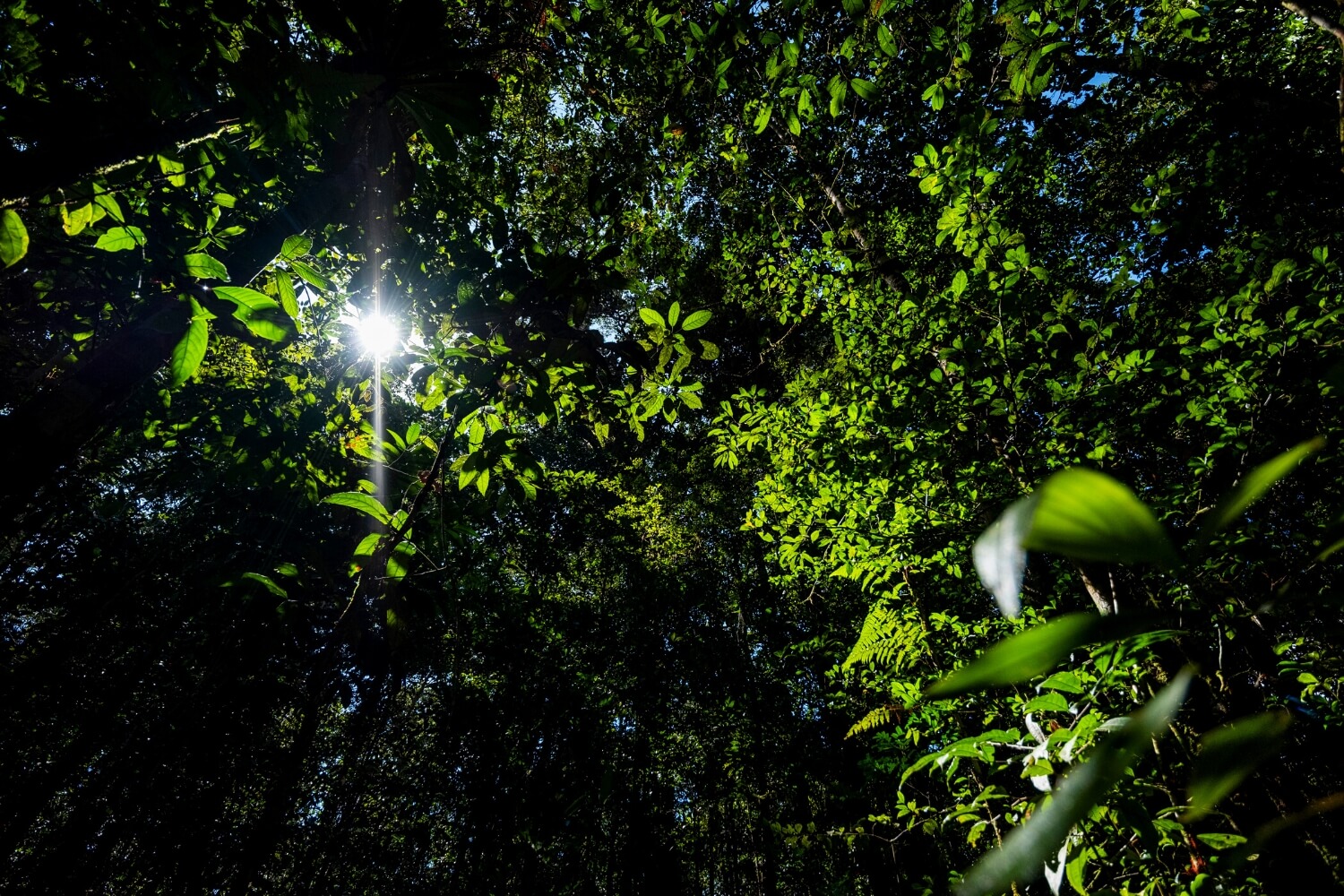
The Amazon rainforest is a rich storehouse of natural medicines, which will save the humanity against any other big pandemic events, or will control a rare modern disease, that now days don’t have any cure even. For example, this jungle is home to almost seventy percent of the plants which have cancer-fighting properties. Trees and plants such as Wasai, Lapacho, and Cordoncillo are rich in medicinal values.
A quarter of the western medicine pharmaceuticals used today has rainforest-based ingredients that originate from the Amazon rainforest, yet only 1% of plant species have been tested for medicinal properties. Currently, over 120 drugs come from plant-derived sources. Actually, many more plants used by the natives to treat a variety of illnesses have not been subjected to scientific research.
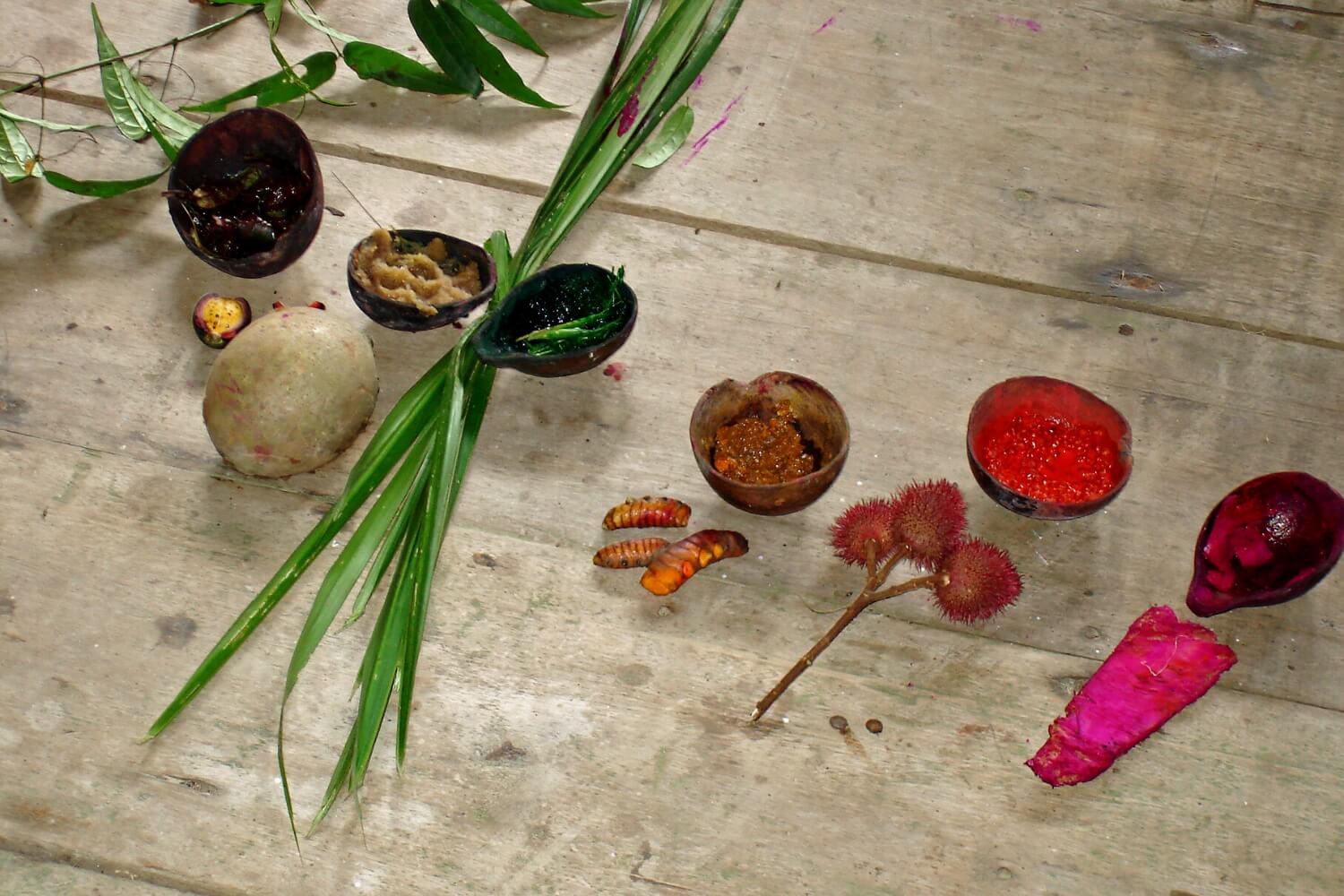
A giant in the rainforests, the kapok tree can reach up to 200 feet in height, sometimes growing as much as 13 feet per year. Due to its extreme height, the kapok, or ceiba tree, towers over the other rainforest vegetation. Some varieties of the ceiba tree are characterized by spines or conical thorns, giving the tree a menacing appearance. The trunk can expand to nine or 10 feet in diameter.
In the nooks and grooves of this huge plant live a diverse number of species including frogs, birds and bromeliads. The kapok tree is deciduous, shedding all of its leaves during the dry season. As its seeds are easily blown into open areas, kapok trees are some of the first to colonize open areas in the forest. The white and pink flowers of the kapok tree emit a foul odor that attracts bats. A large kapok tree can produce an estimated 650,000 flowers which contain 200liters of nectar when blooming
As the flying mammals move from flower to flower feasting on the nectar, they transfer pollen on their fur, thus facilitating pollination. The kapok tree does a great job at spreading its seeds, producing anywhere between 500 and 4,000 fruits at one time, with each fruit containing 200 seeds. When these fruit burst open, silky fibers spread the many seeds all over the forest.
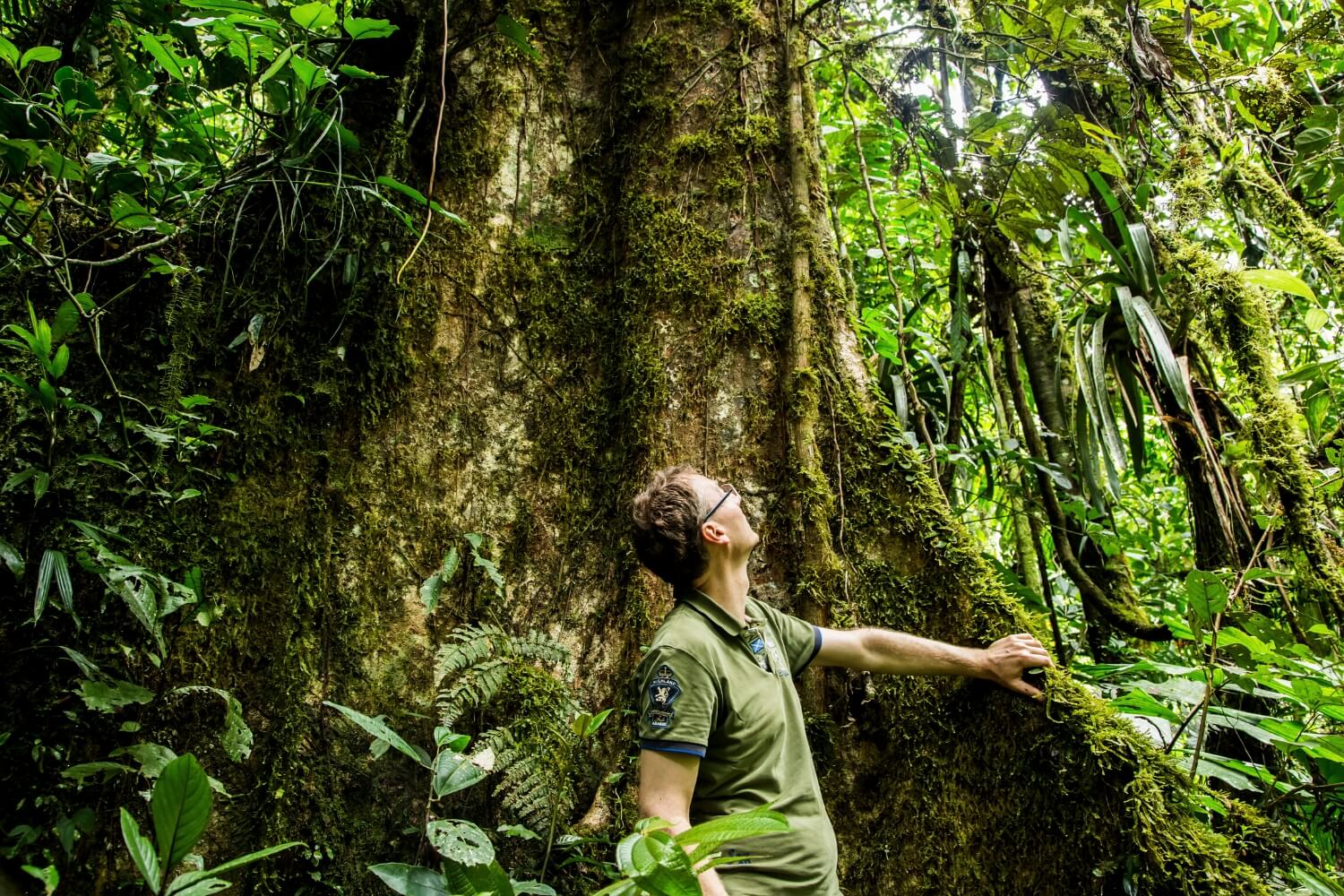
The investigation has made it possible to calculate that every year some 22,000 tons of phosphorus from the Sahara fall into the Amazon basin, a transcendental contribution of fertilizer for the balance of plant life in the tropical forest. The Sahara desert is one of the most inhospitable climates on Earth. Its arid plateaus, rocky peaks and shifting sands envelop a third of North Africa, which has very little rain, vegetation and life.
Meanwhile, on the other side of the Atlantic Ocean, the world’s largest rainforest thrives. The lush and vibrant Amazon Basin, located in northeastern South America, possesses a vast network of unrivaled ecological diversity. So what do these seemingly so different climates have in common? They are intimately connected by a river of intermittent atmospheric dust almost 17,000 kilometers (10,000 miles) long. Every year, strong winds from the Sahara send enormous clouds of dust on a transatlantic journey toward the Amazon basin.
This dust, much of it originating from an ancient lake bed in Chad, is rich in phosphorus. When it reaches the rainforest, the remains of long-dead Saharan organisms provide crucial nutrients for the living rainforest flora. Phosphorus, which is essential for plant growth, is in short supply in the Amazon. The desert dust that is deposited in the forest each year helps to reduce this deficit.
Data obtained from NASA’s CALIPSO satellite, which was launched in 2006, may provide the answers. For the first time, CALIPSO has quantified the amount of dust that makes the transcontinental journey; And the numbers are impressive: of the 182 million tons of dust (or an amount equivalent to almost 700,000 trucks) that leave the Sahara each year, 27.7 million tons, or 15% of the total, is scattered in the Amazon basin.
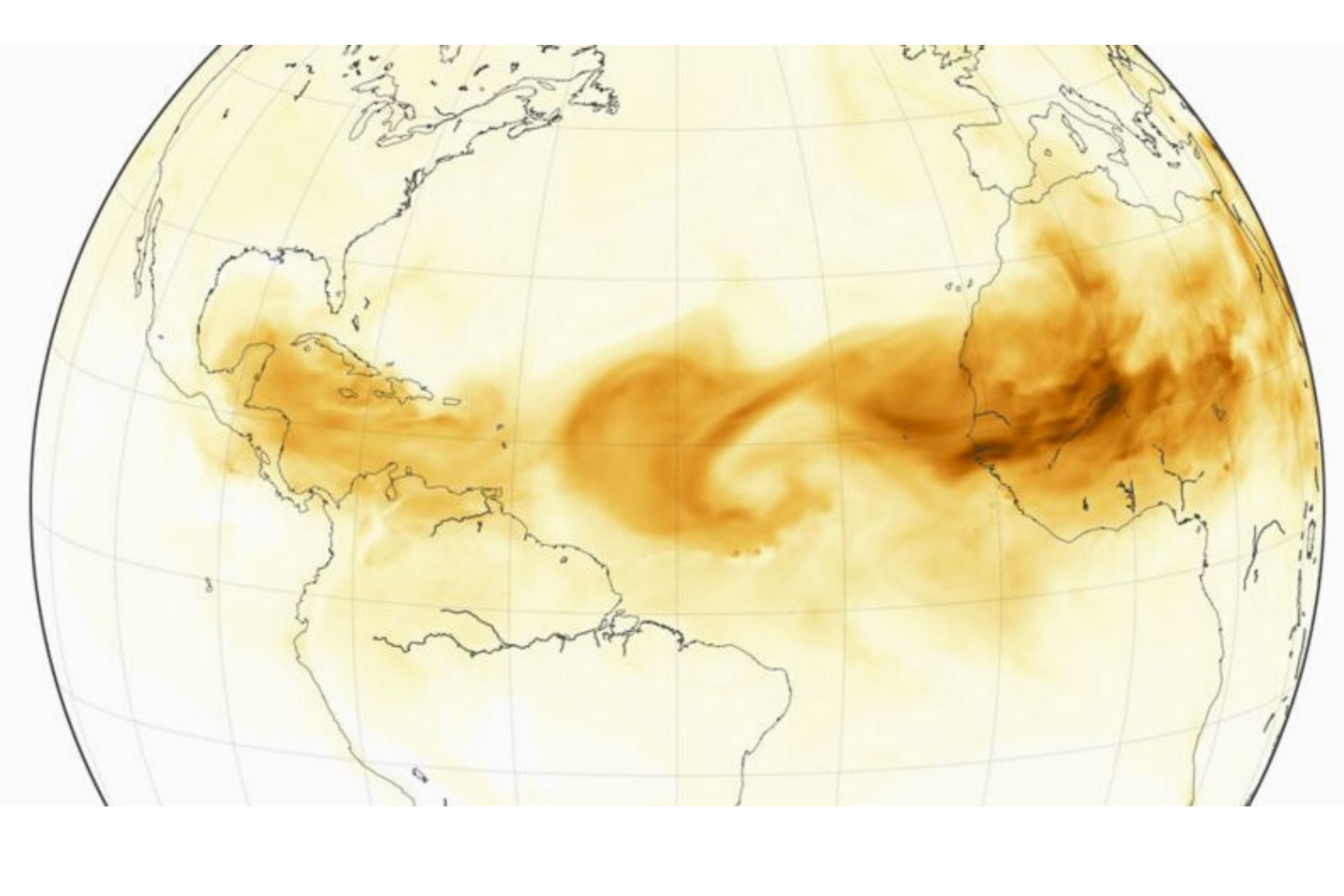
The Amazon rainforest contains more than 3,000 fruits. Only 200 of these are consumed in the western world. Out of all the food that the developed world eats today, 80% had its origin in the jungles of Amazon. Colorful and succulent, the fruits of the Amazon are extremely varied and found in different regions. Some of the most typical fruits used in the Amazon diet are the camu camu, maracuya, acai, bacaba, copazu, aguaje, and the cocona.
When you visit the Amazon, whether through a lodge or a cruise, you can discover regional dishes that incorporate many exotic plants, flowers, and meat. Get ready for some new, and familiar flavors as you dive into some of the Amazon’s most popular dishes. Learn about and experience various types of fruits, meat, and nuts that are unique to the Amazonian region.
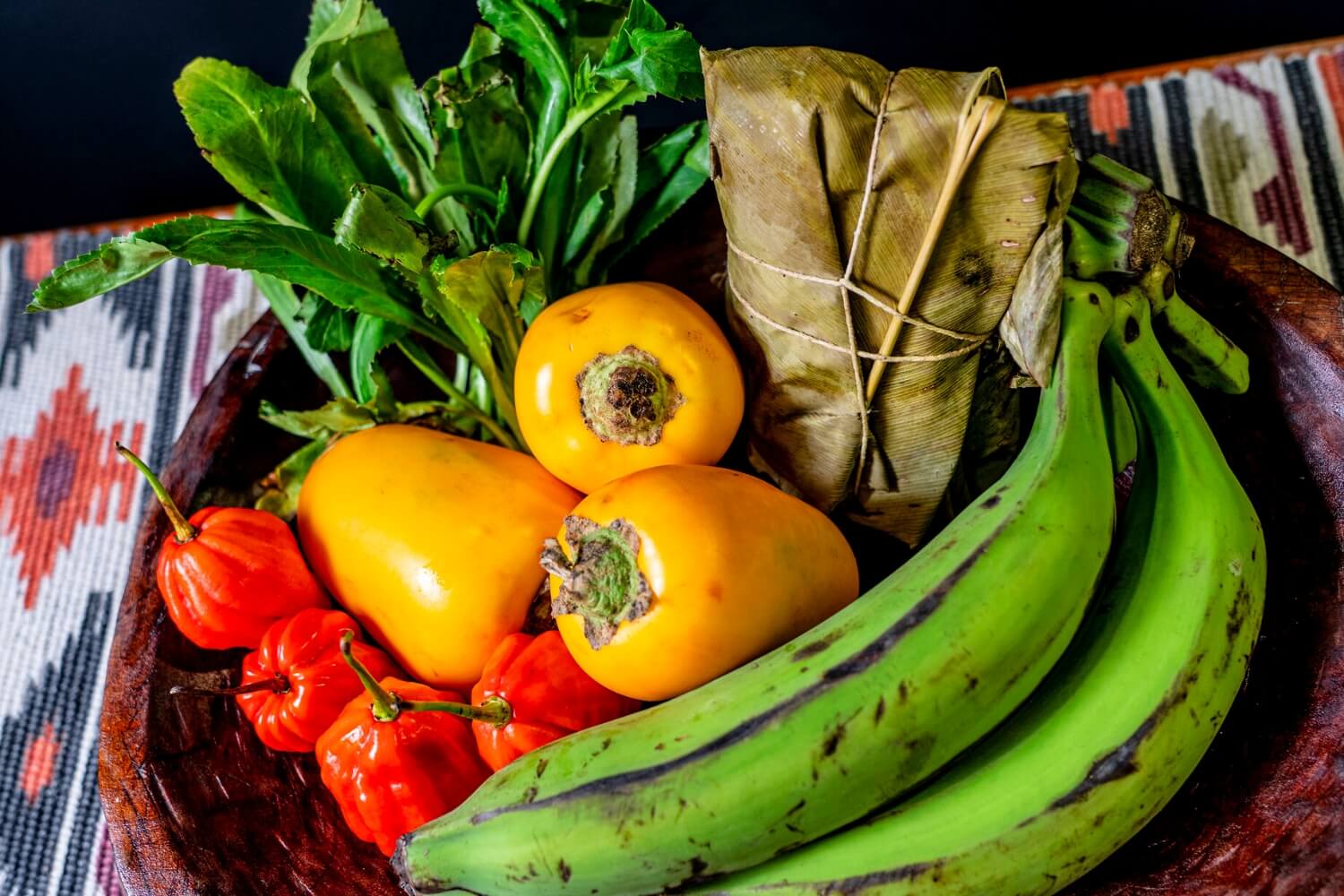
At least 17 different species of macaws live in Amazon rainforest. These incredibly colorful, long-living and long-tailed are fascinating creatures, with complex social behaviors and slightly peculiar diets. The biggest of all the macaws is the hyacinth macaw, which measures about 3.3 feet from head to tail with a wingspan approaching 5 feet. Hyacinth macaws live in Amazon Basin regions of Brazil.
As well as being big, macaws are also wonderfully colorful. The various species have mixed colors ranging from blue and gold to green and red, with plenty of other combinations displayed in their vivid plumage. They also have distinctive facial patches. The patterns on these patches are unique to each bird, as unique as a human fingerprint.
Macaws can be particularly noisy creatures, filling the canopy with their screams. But they do it for perfectly reasonable reasons: to identify one another, to communicate with other members of their flock, and to mark their territory. Macaws typically mate for life. As well as being monogamous, these romantic parrots like to share food with each other, engage in mutual grooming, and generally enjoy hanging out and flying around together. You’ll often see couples flying side-by-side above the trees and rivers of the rainforest, so close they’re almost touching.
Macaws are omnivores and eat all kinds of things, including fruits, nuts, seeds, leaves, flowers, stems and insects. In the Amazon Basin, some macaws also eat clay from clay licks along the riverbanks. It’s believed the clay helps neutralize toxins found in elements of their diet. Some clay licks, like those in Tambopata, Peru, attract hundreds of macaws every day, providing a real spectacle for lucky human onlookers.
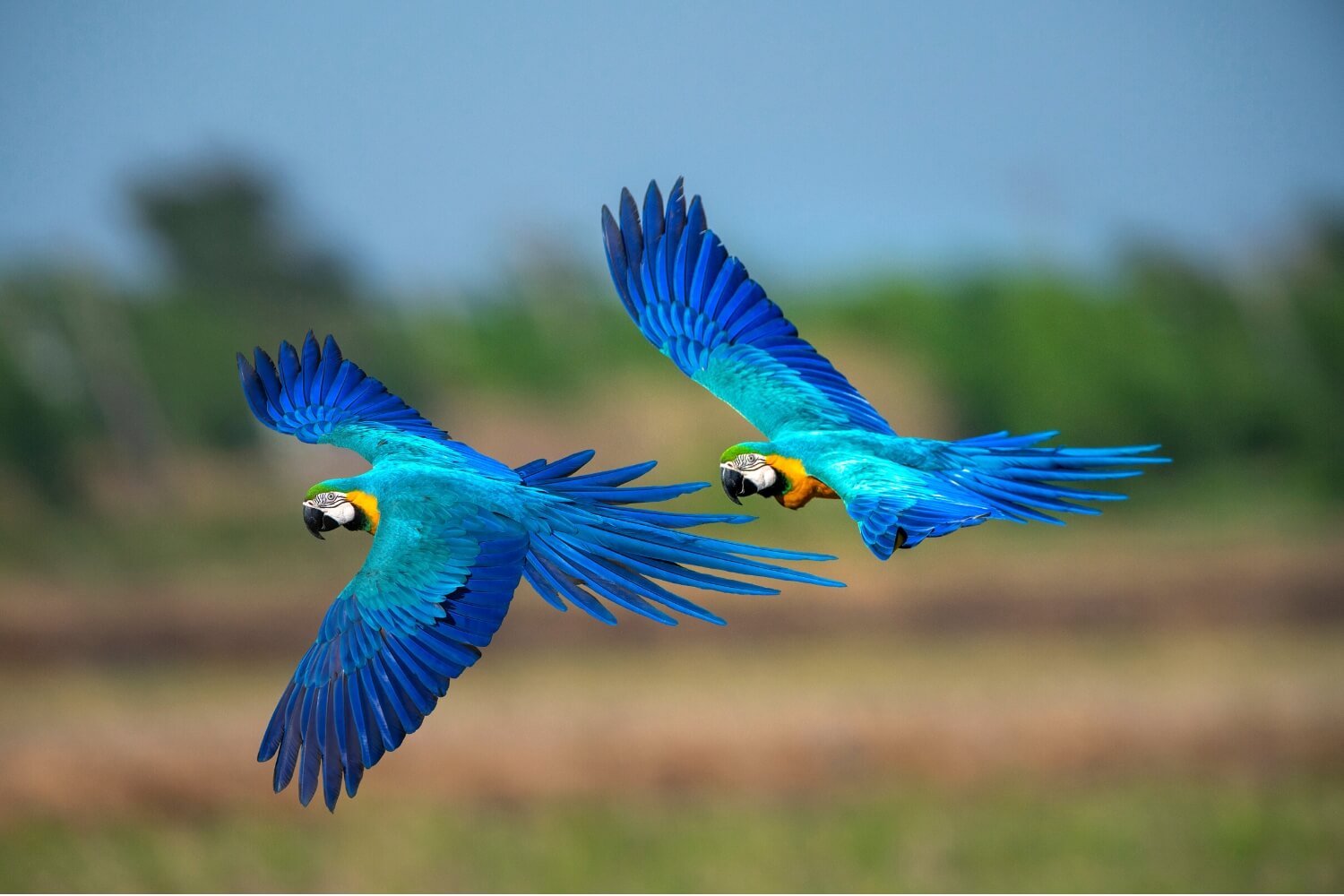
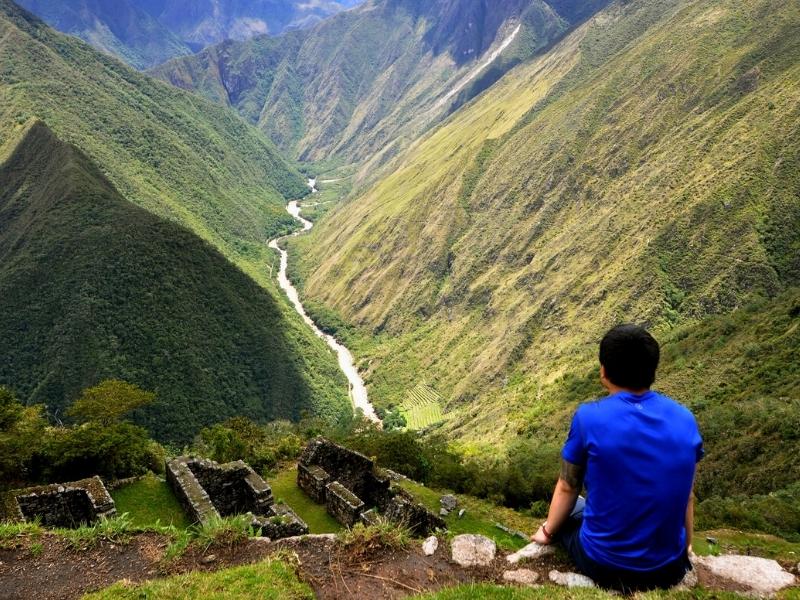
Explore the Manu Amazon Rainforest & Inca Trail hike to Machu Picchu, you will enjoy the best adventures in Peru, exploring amazing inca trail routes and the best amazon wildlife with our local tour guides, in small groups.

Your journey to the Tambopata National Reserve offers a great opportunity to discover a lively biodiversity of birds, mammals, reptiles, insects and trees. Record-setting numbers of animal species are concentrated within small areas, and the variety of plant life is greater than almost anywhere in the world.


Your luxury trip to Peru includes a selection of Andean and Amazonian landscapes. We will help you to explore this welcoming and varied country, planning each step of your trip, with the best services. With the help of amazing expert guides, you can enjoy all that Peru has to offer, every detail is well taken care of.


Dive deep into the culture and landscapes of Peru with this adventure to Machu Picchu, the Amazon and more. Search for wildlife along jungle trails and rivers in the rainforest from a comfortable lodge then head up into the Andes to Cusco, the capital of the Inca empire.


The Manu Jungle tour goes to one of the largest life biosphere reserves in the World. You will enjoy wildlife, traditional villages, with the best specialized guides.

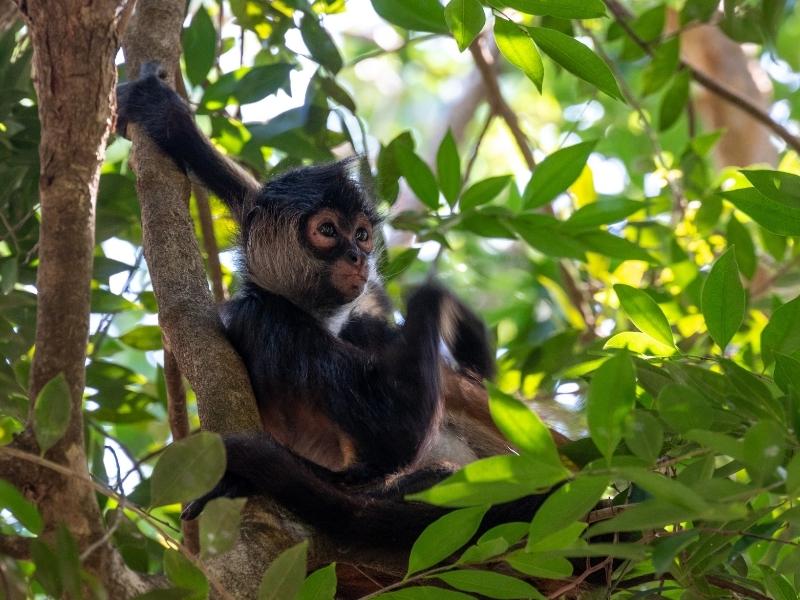
Manu National Park is an excellent way to experience an intense amazon wildlife.Is the biggest Amazon rainforest in the Americas, its incomparable natural wealth, host the greatest amount of flora and fauna of the world.
